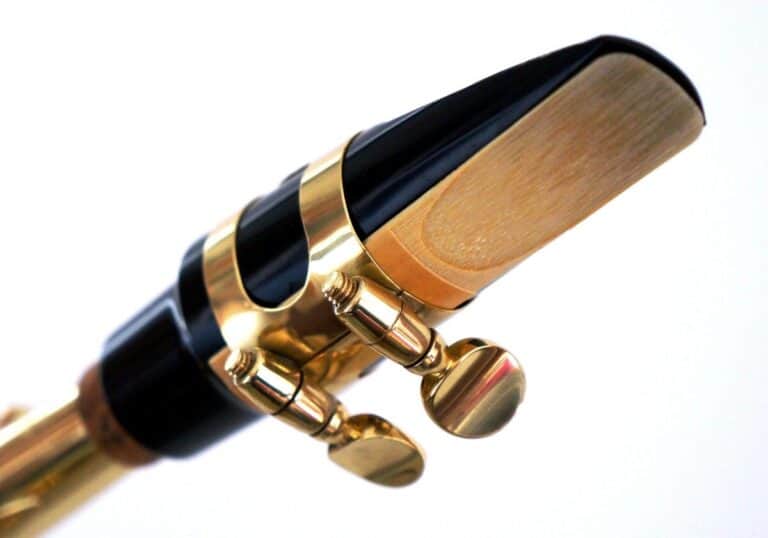Is It Hard to Play The Saxophone?
Learning a new instrument can be intimidating, especially if the instrument has a reputation for being difficult. You’re probably here looking to figure out whether this is the case for the saxophone. So, is the saxophone hard to play?
It is not hard to play the saxophone compared to other wind instruments. Most beginners can get a sound out of the saxophone on their first try with proper instruction. Starting out with quality equipment and a teacher who specializes in the saxophone can make learning easier.
Learning the saxophone will still take lots of effort (as is the case with any instrument). Even so, the saxophone is much easier to get started with than comparable instruments, as anyone who blows into a saxophone of reasonable quality with good equipment can produce a sound. Dennis Adcock, an experienced conductor and repairman, argues in this article that the issue is usually with the saxophone and/or equipment if a beginner cannot produce a sound [1]. We’ll get more into this and the other beginner pitfalls later in the article.
Can anyone play the saxophone?
Almost anyone who is at least ten years old can play the saxophone. The alto saxophone is small enough that most people will be able to hold it and carry its weight.
There are three requirements in order to play the saxophone:
- Your hands need to be large enough to hold the instrument,
- You need to be able to carry the saxophone’s weight,
- You need healthy lungs.
For the most part, I think the ability to play the saxophone depends not on specific skills but rather on being able to hold and handle the instrument. Hand size is rarely an issue, as most people who are over ten years old have large enough hands to play the saxophone. We cover the topic of hand size more in an article here.
The physical size of the instrument can be an issue for larger saxophones, such as the baritone sax. The saxophone can be heavy, and it often hangs around the neck. Though there are alternatives such as harnesses, the weight will take some getting used to. Smaller saxophones such as the alto sax shouldn’t be much of a strain, but it takes some getting used to.
As far as lungs go, you need to be able to blow a steady stream of air and maintain it for at least a few seconds.
How to make the saxophone easier
You will find it easier to learn the saxophone if:
- You start out on high-quality equipment,
- You have a knowledgeable saxophone teacher,
- You make a regular habit of practicing, and
- You start out on the alto or tenor saxophones.
Equipment
It can be tempting to start out on a cheap saxophone with a cheap mouthpiece. Don’t do this. It is good to buy things that are affordable, but you ideally want to purchase something from a reputable brand. For instance, Yamaha makes good beginner saxophones.
For mouthpieces, I recommend something from either Vandoren or Selmer. The Vandoren Optimum AL3 (for alto saxophones) is one of my favorite mouthpieces, and one of the best options for beginners. The Selmer C* (S-80) is also excellent. For reeds, I recommend starting on a Legere Signature Series plastic reed.
It can seem like an unreasonably large investment to buy good saxophone equipment straight from the beginning. However, it is important to start on good equipment. In interviews for Ulf Eriksson’s dissertation, the famous saxophone pedagogues Rick VanMatre and Steve Duke both emphasized that there is a risk to playing on bad equipment, especially starting out [2]. Bad equipment causes the saxophone to respond in a way that it shouldn’t, making it difficult to achieve good playing.
Starting out on bad equipment will lead you to compensate for the bad equipment and form bad habits. At that point, it will be much more difficult to correct your playing even if you switch to better equipment.
Have a knowledgeable saxophone teacher
It is always easier to learn an instrument when you have the help of a teacher who really understands the instrument well. They will be able to help you avoid many bad habits, which will ultimately allow you to grow more quickly as a saxophonist.
I recommend aiming to find a teacher who plays the saxophone as their primary instrument. They’ll typically have a more extensive knowledge of the saxophone than someone who just doubles on it. John Webb, a saxophone pedagogue, argues in his dissertation that there is a tendency to approach teaching the saxophone as if it were a clarinet – and this is not the case [3].
The same is true for any instrument you are interested in learning; find a professional who primarily plays that instrument specifically. Many teachers will base the way they teach all instruments off of the way that they teach their primary instrument. This is best avoided, and the easiest way to do that is to find a teacher who specializes in your desired instrument.
Make a habit of practicing
It is better to practice for ten minutes every day than it is to practice 70 minutes one day per week. The more regularly you play saxophone, the easier time you will have learning it.
It’s been empirically demonstrated that people retain information better the more that it is spaced out [4]. This is true for learning an instrument as well! To make the most of your practice, it is much more important to practice consistently than it is to squeeze in the largest possible number of hours.
Of course, it is still helpful to practice for longer sessions as well. However, consistency is the most important thing when it comes to learning an instrument. As long as you practice consistently and correctly, you will make progress.
Start out on the alto or tenor saxophone
The alto and tenor saxophones are typically considered the easiest to get started with. The soprano saxophone is often said to be difficult to control, while the baritone saxophone takes a lot of air on top of being large and cumbersome.
If you’re in doubt, I recommend starting on the alto saxophone. It is small enough to be suitable for children of at least age ten, and the weight isn’t too much of a burden.
Conclusion
I don’t think it’s that hard to learn the saxophone as a beginner, at least compared to other instruments. If you’re considering it as an option, I strongly recommend going for it – though in this respect I am biased.
If you already have a saxophone, the next step is probably learning to put it together. You can find an article on the subject here.
References
[1] Adcock, Dennis. “Saxophone Subtlety Suffers.” Canadian Winds: The Journal of the Canadian Band Association 3.1 (2004): 37.
[2] Eriksson, U. J. (2012). Finding pedagogical strategies for combined classical and jazz saxophone applied studies at the college level.
[3] Webb, J. C. (1994). Pedagogical problems and solutions in current saxophone works (Doctoral dissertation, University of Northern Colorado).
[4] Sisti, H. M., Glass, A. L., & Shors, T. J. (2007). Neurogenesis and the spacing effect: learning over time enhances memory and the survival of new neurons. Learning & memory, 14(5), 368-375.







